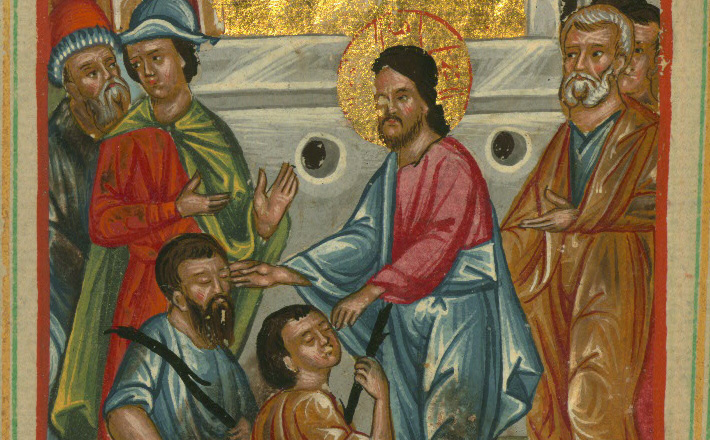Commentary on Ephesians 5:8-14
To understand the thrust of this text it helps to understand the broad structure of the letter to the Ephesians written by an unknown author using Paul’s name a decade or two after Paul’s death.
Chapters 1-3 of Ephesians serve as an identity reminder. That is, in the first half of the letter the author is celebrating the audience’s common identity and status which God has fully accomplished in the death and resurrection of Jesus Christ (1:4-11).
They now participate in Christ as raised participants in God’s salvific designs and reality for the cosmos (2:1-10). He calls on them to remember how they have been made part of the single, new humanity as members of the household of God (2:11-22). In the closing section of chapters 1-3 the author prays that the letter’s recipients would be rooted and strengthened in the love of Christ so that they would be filled with the fullness of God (3:14-21). Then he finishes off with a doxology sealed with a closing “Amen” (3:20-21).
While chapters 1-3 thus serve as a theological “because” depicting the audience’s identity and reality in Christ accomplished according to God’s plan, chapters 4-6 serve as a theological “therefore” which calls the audience to enact their salvation in their conduct and relationships (note that the Greek work “therefore” literally stands in the opening words of 4:1). A crucial word which the author uses six times in chapters 4-6 to denote their called for conduct is the Greek word peripateo (4:1,17bis; 5:2,8,15).
Literally it means “to walk around” but is commonly used in the Pauline corpus to denote appropriate Christian conduct. It is akin to our use of the word “walk” in the phrase, “You can talk the talk, but can you walk the walk?” as a reference to how one lives their life in concrete ways. The six uses of peripateo in the second half of the letter build on its use in 2:10 where the author claims that Christians “were created in Christ Jesus for good works which God prepared ahead of time in order that we would walk in them.” (Translation mine) In this way chapters 4-6 elucidate appropriate Christian conduct and relationships as the battery of good works God has already prepared for us.
Our particular text follows a set of prohibitions regarding sexual immorality including the command not to associate with people who engage in such depravity (5:3-7). On the one hand, because 5:8 does not really begin an entire new section, the instructions regarding sexual conduct would seem to continue into this text. On the other hand, because the instructions of 5:8-14 are quite generalized it could also be assumed that the author is applying these instructions broadly to include all aspects of Christian conduct.
Ephesians 5:8a functions as a brief identity reminder where the author reminds the audience that formerly they were darkness, but now they are light in the Lord. Verse 5:8b is a call to action as a result of their light identity. They are to walk as children of light. So once again Christian identity and reality are the foundation and springboard for distinctive Christian conduct. Verse 5:9 elucidates of what such conduct entails. The fruit of our light identity involves conduct which is pervasive goodness, righteousness, and truth. Goodness recalls the good works God prepared for us (2:10) while righteousness and truth involve conduct, speech, and relationships as established in Christ (4:21-25).
While such conduct is quite general in character, 5:10 reminds us that this also involves the ongoing discernment of behavior which is pleasing to Christ. Quite often to post-Reformation ears, behavior which is pleasing to Christ smacks of works righteousness. That is not the case for this author. Good works and Christ pleasing behavior are important aspects of living the Christian life precisely because God prepared such good works for us to do and because we are to emulate God and Christ as indispensable components of our walk of life (5:1-2).
Christian conduct as exposure is the main thrust of the instructions in 5:11-14. In 5:9 he spoke positively of the fruit of light as part of our light identity. Now in 5:11 he warns the audience not to be co-participants in unfruitful works of darkness, i.e., behavior which is the opposite of goodness, righteousness, and truth. Instead, Christians are to expose such wrong behaviors for what they truly are.
In this case, exposure most likely includes engaging in the exact opposite behavior as well as verbally pointing out what would be appropriate conduct which pleases Christ (recalling the prior instruction to speak the truth to each other, 4:25). Ironically, in 5:12 the author instructs his audience not even to name the shameful, unfruitful works of darkness.
The author also assumes that exposure of negative behavior and lifestyles by positive Christian conduct and speech can become an evangelism tool. When the perpetrators of the unfruitful works of darkness see how the children of light walk their walk (5:8b-9) they have the potential to be converted so that they also become light (5:13 recalling Christian reality as light in 5:8a). To undergird this point, the author closes the unit in 5:14 by quoting what was most likely part of an early Christian hymn depicting the believers’ original conversion experience as awaking from sleep and arising from the dead because Christ illuminated them. This also recalls prior claims about conversion as moving from death to life and resurrection through God’s love and mercy in 2:1-6.
Finally, this reminder of their own conversion experience has a twofold effect. First, it helps them refocus on new conduct which fully reflects their new God-awakened and Christ enlightened reality. Second, it bolsters them to make their new conduct a public act of exposure so that it has the potential to impact others to awake from the sleep and deadness of their own negative conduct and be converted into light, as Christ now illuminates their lives through the proper conduct, speech, and relationships of God’s people in Christ Jesus.


March 30, 2014